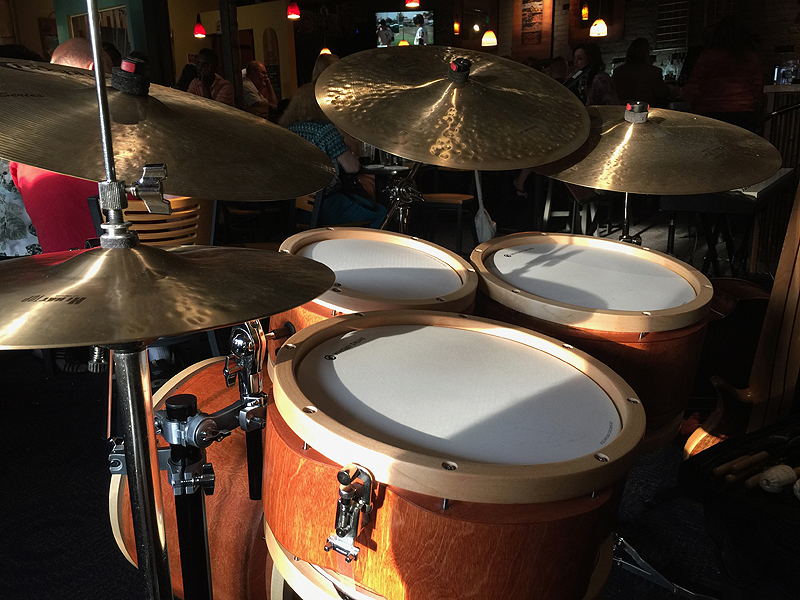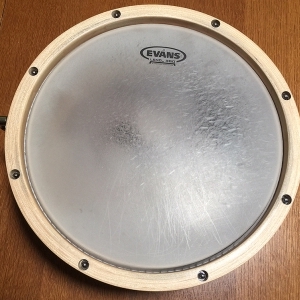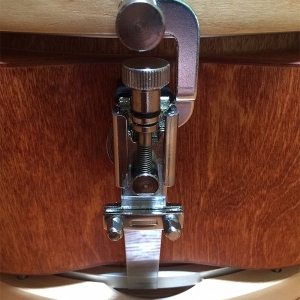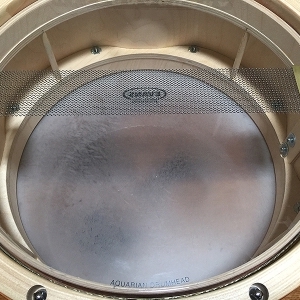The Whitney Shamrock Snare Drum
I must admit to being extremely skeptical about this snare design. The four concave indents in the shell make this one of the most unusual looking snare drums I’ve ever seen. I’m guessing that this design grew out of a need to recess the snare throw-off and butt plate that holds the snare up against the bottom/resonant snare head to allow the snare to nest inside the bass drum easier. The shell isn’t wider than the optional wood rims, so you don’t see it when you are playing the drum.
 At first, I didn’t understand why this type of throw-off was used. If you click on its picture to see more detail, you’ll see that it has a bend in it that allows it to reach around the thick wood rim above, while mounting into the recessed curve of the shell.
At first, I didn’t understand why this type of throw-off was used. If you click on its picture to see more detail, you’ll see that it has a bend in it that allows it to reach around the thick wood rim above, while mounting into the recessed curve of the shell.
The snare is the only one of the drums with the reinforcement dowels on the inside. This gives this very light-weight drum enough additional strength to survive heavy playing and knocking around during transport.
If you click on the picture showing the inside of the drum and look closely near the right and left of the snare strainer, you’ll note a small hole drilled near the bottom rim. Those are the air holes that allow the drum to breathe. These are very cleverly placed behind lugs and somewhat in the shadow of drums rims, making them all but invisible on the outside of the drum. Being out of the way like this, they also don’t require any hardware to protect them from splitting and it doesn’t detract from the overall look of the drum.
Hear what this kind of snare sounds like
Things to note about this snare are:
- It’s amazingly lightweight. Think acoustic guitar kind of lightweight.
- The cross-stick volume. I’ve had to learn to go easy with the cross-sticking. This type of rim (at least on this snare) has a huge cross-stick sound and in small rooms, it can easily be too much. It reminds me of the volume a nice set of rosewood clave has.
- It sounds like a 14” drum, looks more like a 14” drum and you won’t notice it’s a 13” head until you start doing some wide brush strokes.
- This style of clawless wood rims make it easy to tune and give the drum a warm sound.
- It can be a little soupy sounding if you are not careful with your tuning. I had a local drum tech widen the snare-bed on my “tenor” kit’s snare that gives the snare a little more of a contemporary sound and response.


